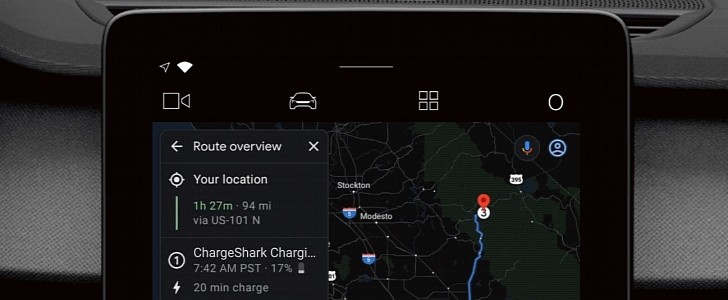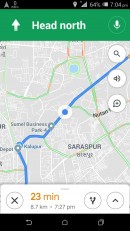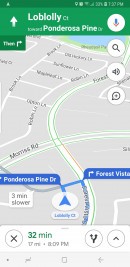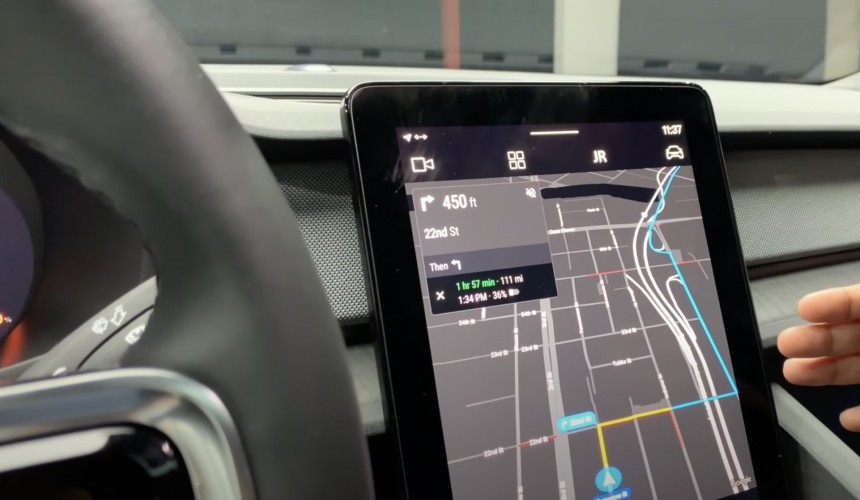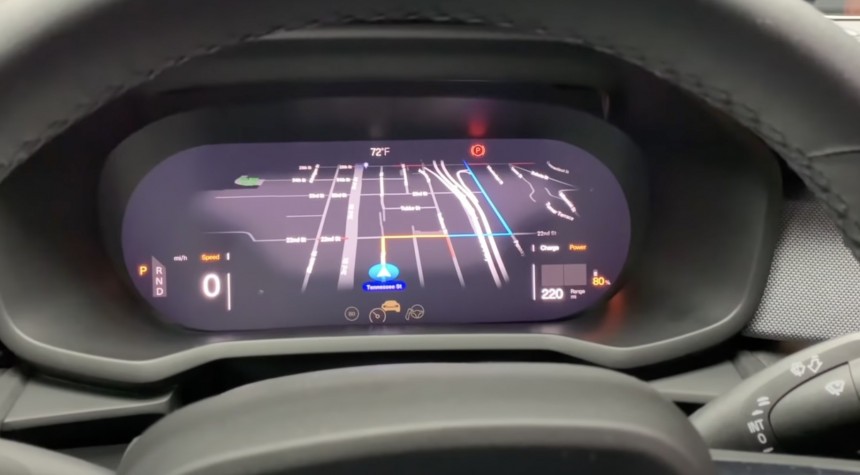Google Maps is a very advanced navigation solution available on pretty much every platform out there, including not only on the desktop, but also on the web, Android, iPhone, Android Auto, and CarPlay.
The Mountain View-based search giant is working non-stop on adding new-generation functionality to Google Maps, but worth knowing is that right now, the company is developing new capabilities on multiple fronts.
In other words, while Android and iPhones are indeed getting new features, there are platforms where even more advanced utilities can be offered to users. And one of them is Android Automotive.
As a fully featured operating system that comes bundled with the head unit in a new car, Android Automotive allows Google Maps to be deeply integrated into the driving experience. As a result, it can access more vehicle data and therefore provide users with more advanced navigation.
As you could easily guess given it uses a rather self-explanatory name, the purpose of this feature is to estimate the battery level when you arrive at a destination.
This is useful for a wide variety of reasons, especially because it could help plan future trips in advance, all based on your battery estimates.
At the same time, Google Maps will continue to monitor the battery level as you drive towards the destination and therefore update the battery on arrival information accordingly.
However, thanks to the support for Android Automotive, the application sports even more advanced capabilities that work side-by-side with the external cameras installed on the car.
Some models out there can display speed limit information on the dashboard by automatically reading road signs. However, if these are missing or aren’t clearly visible (during bad weather such as when raining or snowing), Google Maps can always lend a hand to the built-in system.
The navigation app can automatically provide speed limit information until the road sign data can be read once again. Worth knowing, however, is that the provided info isn’t always 100 percent accurate, as it all depends on various factors, such as the time of day, the weather, or current traffic conditions.
Google Maps can automatically provide information to this system in order to let it know how much it should accelerate without breaking the speed limit. Google says the whole thing helps improve the overall quality of the feature, though once again, it’s important to know that the data offered by Google Maps may not always be 100 percent accurate.
Needless to say, Google Maps is capable of doing so much more on Android Automotive thanks to the deep integration into the car.
For example, it also benefits from more advanced voice commands as compared to the standard version on Android or Android Auto. It can also look for charging stations automatically whenever you’re on the way to a new destination and the battery level drops to a level that doesn’t allow the vehicle to complete the journey.
In the future, there’s a very good chance these new-generation capabilities would be further expanded, especially as the number of Android Automotive-powered vehicles on the road is increasing.
You can find a list of the cars running Android Automotive on this page.
In other words, while Android and iPhones are indeed getting new features, there are platforms where even more advanced utilities can be offered to users. And one of them is Android Automotive.
As a fully featured operating system that comes bundled with the head unit in a new car, Android Automotive allows Google Maps to be deeply integrated into the driving experience. As a result, it can access more vehicle data and therefore provide users with more advanced navigation.
Battery on arrival
One of the most important features for users who run Google Maps built into an electric car is called battery on arrival.As you could easily guess given it uses a rather self-explanatory name, the purpose of this feature is to estimate the battery level when you arrive at a destination.
This is useful for a wide variety of reasons, especially because it could help plan future trips in advance, all based on your battery estimates.
At the same time, Google Maps will continue to monitor the battery level as you drive towards the destination and therefore update the battery on arrival information accordingly.
Speed limit information
As you probably know already if you’ve used Google Maps in the United States, the app comes with a built-in speedometer (the same feature is also available in a series of other regions, though it’s not offered globally).However, thanks to the support for Android Automotive, the application sports even more advanced capabilities that work side-by-side with the external cameras installed on the car.
Some models out there can display speed limit information on the dashboard by automatically reading road signs. However, if these are missing or aren’t clearly visible (during bad weather such as when raining or snowing), Google Maps can always lend a hand to the built-in system.
The navigation app can automatically provide speed limit information until the road sign data can be read once again. Worth knowing, however, is that the provided info isn’t always 100 percent accurate, as it all depends on various factors, such as the time of day, the weather, or current traffic conditions.
Adaptive Cruise Control
The same speed limit information can also help the Adaptive Cruise Control system that is installed in some cars.Google Maps can automatically provide information to this system in order to let it know how much it should accelerate without breaking the speed limit. Google says the whole thing helps improve the overall quality of the feature, though once again, it’s important to know that the data offered by Google Maps may not always be 100 percent accurate.
Needless to say, Google Maps is capable of doing so much more on Android Automotive thanks to the deep integration into the car.
For example, it also benefits from more advanced voice commands as compared to the standard version on Android or Android Auto. It can also look for charging stations automatically whenever you’re on the way to a new destination and the battery level drops to a level that doesn’t allow the vehicle to complete the journey.
In the future, there’s a very good chance these new-generation capabilities would be further expanded, especially as the number of Android Automotive-powered vehicles on the road is increasing.
You can find a list of the cars running Android Automotive on this page.
